|
||||||||||||||||||||||||||||||||||||||||||||||||||||
|
||||||||||||||||||||||||||||||||||||||||||||||||||||
|
Index by
County Name -
Index by County Seat -
Architect List
-
Native American National Capitol Buildings Oklahoma Historical Chronology - Resources |
||||||||||||||||||||||||||||||||||||||||||||||||||||
| For additional historical information about Oklahoma counties, county seats, or people, you can go to the Oklahoma Historical Society Web Site and use their search engine. This is an excellent resource for researching Oklahoma's very interesting and unique history. | ||||||||||||||||||||||||||||||||||||||||||||||||||||
 |
||||||||||||||||||||||||||||||||||||||||||||||||||||
|
I photographed my first Oklahoma county courthouse in 2001 and completed all 77 counties in 2006. However, periodic updates are required as older buildings are being renovated or new courthouses are constructed. What this means is I need to hit the road again and take some more pictures. I look forward this challenge and updating this site with new images. Oklahoma has a interesting and unique history. During the Indian Territory period in the 19th Century, tribal Capitol buildings were constructed and many of the tribes also established a county system. Following statehood in 1907, county boundaries were redrawn and some of the tribal Capitol buildings were used as county courthouses for the new State of Oklahoma. Eventually, these buildings were returned back to their rightful owners. Some of these structures are still standing today and we have created the Native American National Capitol Buildings section below to highlight their historical significance. Thanks for looking. Enjoy! |
||||||||||||||||||||||||||||||||||||||||||||||||||||
 |
||||||||||||||||||||||||||||||||||||||||||||||||||||
|
Index by County Name |
||||||||||||||||||||||||||||||||||||||||||||||||||||
| CLICK ON IMAGE BELOW | ||||||||||||||||||||||||||||||||||||||||||||||||||||
| A |
|
|||||||||||||||||||||||||||||||||||||||||||||||||||
| B |
|
|||||||||||||||||||||||||||||||||||||||||||||||||||
| C |
|
|||||||||||||||||||||||||||||||||||||||||||||||||||
| D |
|
|||||||||||||||||||||||||||||||||||||||||||||||||||
| E |
|
|||||||||||||||||||||||||||||||||||||||||||||||||||
| G |
|
|||||||||||||||||||||||||||||||||||||||||||||||||||
| H |
|
|||||||||||||||||||||||||||||||||||||||||||||||||||
| J |
|
|||||||||||||||||||||||||||||||||||||||||||||||||||
| K |
|
|||||||||||||||||||||||||||||||||||||||||||||||||||
| L |
|
|||||||||||||||||||||||||||||||||||||||||||||||||||
| M |
|
|||||||||||||||||||||||||||||||||||||||||||||||||||
| N |
|
|||||||||||||||||||||||||||||||||||||||||||||||||||
| O |
|
|||||||||||||||||||||||||||||||||||||||||||||||||||
| P |
|
|||||||||||||||||||||||||||||||||||||||||||||||||||
| R |
|
|||||||||||||||||||||||||||||||||||||||||||||||||||
| S |
|
|||||||||||||||||||||||||||||||||||||||||||||||||||
| T |
|
|||||||||||||||||||||||||||||||||||||||||||||||||||
| W |
|
|||||||||||||||||||||||||||||||||||||||||||||||||||
.jpg) |
||||||||||||||||||||||||||||||||||||||||||||||||||||
|
Native
American
National Capitol Buildings Back to Top - Index by County Name - Index by County Seat - Architect List Oklahoma Historical Chronology - Resources |
||||||||||||||||||||||||||||||||||||||||||||||||||||
|
In the 19th century, Native Americans began forming their own governments to adapt to the imposed “civilized” lifestyle. In Indian Territory, some tribes built Capitol buildings, which were used in that capacity until Oklahoma became a state in 1907. Following statehood, some of these buildings were used as county courthouses. A number of these structures are still standing and in use today. We have created this section to recognize the importance of all tribal Capitol buildings in addition to the structures that served as county courthouses.
There are 573
federally recognized tribal governments
and 326 Indian reservations in the
United States today. These tribes
possess the right to form their own
governments, to enforce laws (both civil
and criminal) within their lands, to
tax, to establish requirements for
membership, to license and regulate
activities, to zone, and to exclude
persons from tribal territories.
Limitations on tribal powers to
self-government include the same
limitations applicible to states; for
example, neither tribes nor states have
the power to make war, engage in foreign
relations, or coin/print money. In
addition, there are a number of tribes
that are recognized by individual
states, but not the federal government.
The rights and benefits associated with
state recognition vary from state to
state. |
||||||||||||||||||||||||||||||||||||||||||||||||||||
| CLICK ON IMAGE BELOW | ||||||||||||||||||||||||||||||||||||||||||||||||||||
.jpg) |
1867 Cherokee Nation Capitol
and Council House Tahlequah, Oklahoma Served as the Cherokee County Courthouse 1907 - 1979. Now serving as the site of the tribal supreme court and judicial branch. |
|||||||||||||||||||||||||||||||||||||||||||||||||||
 |
1890 Chickasaw Nation Capitol
and Council House Tishomingo, Oklahoma Served as the Johnston County Courthouse 1910 - 1992. Now serving as the Chickasaw National Capitol Museum. |
|||||||||||||||||||||||||||||||||||||||||||||||||||
.jpg) |
1884 Choctaw Nation Capitol
and Council House Tuskahoma, Oklahoma Now Serves as the Choctaw Nation National Museum. |
|||||||||||||||||||||||||||||||||||||||||||||||||||
.jpg) |
1878 Creek (Muscogee) Nation Capitol
and Council House Okmulgee, Oklahoma Served as the Okmulgee County Courthouse 1907 - 1917. Now serving as the Creek Council House Museum. |
|||||||||||||||||||||||||||||||||||||||||||||||||||
.jpg) |
1894
Osage Nation Capitol and Council House Pawhuska, Oklahoma Serving as the Pawhuska City Hall Since 1907. |
|||||||||||||||||||||||||||||||||||||||||||||||||||
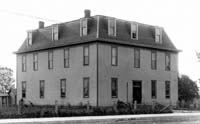 |
c1868
Seminole Nation Capitol
and Council House Wewoka, Oklahoma Served as the Seminole County Courthouse 1907 - 1927. This building is no longer standing. |
|||||||||||||||||||||||||||||||||||||||||||||||||||
.jpg) |
||||||||||||||||||||||||||||||||||||||||||||||||||||
|
County Courthouse Index by
County
Seat Back to Top - Index by County Name - Architect List - Native American National Capitol Buildings Oklahoma Historical Chronology - Resources |
||||||||||||||||||||||||||||||||||||||||||||||||||||
| A | Ada - Altus - Alva - Anadarko - Antlers - Arapaho - Ardmore - Arnett - Atoka - | |||||||||||||||||||||||||||||||||||||||||||||||||||
| B | Bartlesville - Beaver - Boise City - Buffalo | |||||||||||||||||||||||||||||||||||||||||||||||||||
| C | Chandler - Cherokee - Cheyenne - Chickasha - Claremore - Coalgate - Cordell | |||||||||||||||||||||||||||||||||||||||||||||||||||
| D | Duncan - Durant | |||||||||||||||||||||||||||||||||||||||||||||||||||
| E | Enid - El Reno - Eufaula | |||||||||||||||||||||||||||||||||||||||||||||||||||
| F | Fairview - Frederick | |||||||||||||||||||||||||||||||||||||||||||||||||||
| G | Guthrie - Guymon | |||||||||||||||||||||||||||||||||||||||||||||||||||
| H | Hobart - Holdenville - Hollis - Hugo - | |||||||||||||||||||||||||||||||||||||||||||||||||||
| I | Idabel | |||||||||||||||||||||||||||||||||||||||||||||||||||
| J | Jay | |||||||||||||||||||||||||||||||||||||||||||||||||||
| L | Lawton | |||||||||||||||||||||||||||||||||||||||||||||||||||
| M | Madill - Mangum - McAlester - Medford - Marietta - Miami - Muskogee | |||||||||||||||||||||||||||||||||||||||||||||||||||
| N | Newkirk - Norman - Nowata | |||||||||||||||||||||||||||||||||||||||||||||||||||
| O | Okemah - Oklahoma City - Okmulgee | |||||||||||||||||||||||||||||||||||||||||||||||||||
| P | Pauls Valley - Pawhuska - Pawnee - Perry - Poteau - Pryor - Purcell | |||||||||||||||||||||||||||||||||||||||||||||||||||
| S | Sallisaw - Sapulpa - Sayre - Shawnee - Stigler - Stillwater - Stillwell - Sulphur | |||||||||||||||||||||||||||||||||||||||||||||||||||
| T | Tahlequah - Taloga - Tishomingo - Tulsa | |||||||||||||||||||||||||||||||||||||||||||||||||||
| V | Vinita | |||||||||||||||||||||||||||||||||||||||||||||||||||
| W | Wagoner - Walters - Watonga - Waurika - Wewoka - Wilburton - Woodward | |||||||||||||||||||||||||||||||||||||||||||||||||||
 |
||||||||||||||||||||||||||||||||||||||||||||||||||||
|
Architect
List Back to Top - Index by County Name - Index by County Seat - Native American National Capitol Buildings Oklahoma Historical Chronology - Resources |
||||||||||||||||||||||||||||||||||||||||||||||||||||
| * Indicates a building that is no longer standing | ||||||||||||||||||||||||||||||||||||||||||||||||||||
| Ammerman, Butler, and Thomas - Cherokee (1979) | ||||||||||||||||||||||||||||||||||||||||||||||||||||
| Architects in Parnership - Dewey (2010) | ||||||||||||||||||||||||||||||||||||||||||||||||||||
| Badgett & Coover-Clark - Johnston (1992) | ||||||||||||||||||||||||||||||||||||||||||||||||||||
| Baily, Bozales, Dickenson, and Roloff - *Mayes (1959) | ||||||||||||||||||||||||||||||||||||||||||||||||||||
| Bassham & Wheeler - Le Flore (1926) | ||||||||||||||||||||||||||||||||||||||||||||||||||||
| Bennett, J. H. - *Kingfisher (1903) | ||||||||||||||||||||||||||||||||||||||||||||||||||||
| Berling, Hoff, & Wells - *Oklahoma (1902) | ||||||||||||||||||||||||||||||||||||||||||||||||||||
| Bignell & Fischer - Comanche (1974) | ||||||||||||||||||||||||||||||||||||||||||||||||||||
| BKL, Inc. - Craig (2006) - Mayes (2005) - Ottawa (2007) - Rogers (2013) | ||||||||||||||||||||||||||||||||||||||||||||||||||||
| Black & West - Tulsa (1955) | ||||||||||||||||||||||||||||||||||||||||||||||||||||
| Blumenaur & Associates - Rogers (1937) | ||||||||||||||||||||||||||||||||||||||||||||||||||||
| Bransborg & Roads - Ottawa (1953) | ||||||||||||||||||||||||||||||||||||||||||||||||||||
| Butler, Forest (Butler Company) - Beaver (1926) - Custer (1935) - Latimer (1939) - Pontotoc (1926) - Pushmataha (1934) | ||||||||||||||||||||||||||||||||||||||||||||||||||||
| Charles & Vandervoot - *Pawnee (1895) | ||||||||||||||||||||||||||||||||||||||||||||||||||||
| Coady, E. - Blaine (1906) | ||||||||||||||||||||||||||||||||||||||||||||||||||||
| Crowell, A. A. - *Garfield (1907) | ||||||||||||||||||||||||||||||||||||||||||||||||||||
| Davis, Davis, & Davis - Pottawatomie (1935) | ||||||||||||||||||||||||||||||||||||||||||||||||||||
| Davis, Joe I. - Choctaw (1964) | ||||||||||||||||||||||||||||||||||||||||||||||||||||
| Davis, Josiah L. - Wagoner (1940) | ||||||||||||||||||||||||||||||||||||||||||||||||||||
| Fryer, W. G. - Creek (Muscogee) Nation (1878) | ||||||||||||||||||||||||||||||||||||||||||||||||||||
| Goodlander, C. W. - Cherokee Nation (1867) | ||||||||||||||||||||||||||||||||||||||||||||||||||||
| Hair, C. E. - Choctaw (1911) - Jackson (1910) - Osage (1912) | ||||||||||||||||||||||||||||||||||||||||||||||||||||
| Hair & Tonini - *Ottawa (1907) | ||||||||||||||||||||||||||||||||||||||||||||||||||||
| Hair, Tonini, & Bramblet - Okmulgee (1917) - Payne (1917) | ||||||||||||||||||||||||||||||||||||||||||||||||||||
| Harrelson, J. J. - Adair (1930) | ||||||||||||||||||||||||||||||||||||||||||||||||||||
| Hawk, J. W. - Noble (1915) | ||||||||||||||||||||||||||||||||||||||||||||||||||||
| Hawk & Parr - Garfield (1934) - McClain (1927) | ||||||||||||||||||||||||||||||||||||||||||||||||||||
| Hicks, Jewell - Atoka (1913) - Bryan (1917) - Garvin (1918) - Marshall (1914) - *Mayes (1922) - *McCurtain (1920) - Murray (1923) - *Stephens (1921 | ||||||||||||||||||||||||||||||||||||||||||||||||||||
| Horack & Smith - Roger Mills (1985) | ||||||||||||||||||||||||||||||||||||||||||||||||||||
| Huddart, John J. - *Woods (1904) | ||||||||||||||||||||||||||||||||||||||||||||||||||||
| Hudgins, Thompson, Ball & Associates - Lincoln (1969) - McCurtain (1964) | ||||||||||||||||||||||||||||||||||||||||||||||||||||
| Hulse, W. E. - Ellis (1912) | ||||||||||||||||||||||||||||||||||||||||||||||||||||
| Jayne, Maurice - Dewey (1925) - Harper (1927) - Texas (1926) | ||||||||||||||||||||||||||||||||||||||||||||||||||||
| Jones - Halley, & Associates - Stephens (1968) | ||||||||||||||||||||||||||||||||||||||||||||||||||||
| Layton, S. A. - *Canadian (1901) - *Cleveland (1906) - Greer (1906) | ||||||||||||||||||||||||||||||||||||||||||||||||||||
| Layton & Forsyth - Oklahoma (1936) | ||||||||||||||||||||||||||||||||||||||||||||||||||||
| Layton, Hicks, & Forsyth - Craig (1920) - Grady (1934) - Harmon (1926) - Jefferson (1931) - McIntosh (1927) - Muskogee (1928) - Okfuskee (1926) - Pittsburg (1926) | ||||||||||||||||||||||||||||||||||||||||||||||||||||
| Layton & Smith - Creek (1914) | ||||||||||||||||||||||||||||||||||||||||||||||||||||
| Layton, Smith, & Forsyth - *Hughes (1920) | ||||||||||||||||||||||||||||||||||||||||||||||||||||
| Layton, Smith, & Hawk - Beckham (1911) - Carter (1910) - Washita (1911) | ||||||||||||||||||||||||||||||||||||||||||||||||||||
| Noftsger, Lawrence &Associates - Caddo (1958) - Kingfisher (1960) | ||||||||||||||||||||||||||||||||||||||||||||||||||||
| Mason & Wilson - Woods (1956) | ||||||||||||||||||||||||||||||||||||||||||||||||||||
| McNeil & Cottingham - *Woodward (1904) | ||||||||||||||||||||||||||||||||||||||||||||||||||||
| Monnot & Reid - Seminole (1927) | ||||||||||||||||||||||||||||||||||||||||||||||||||||
| Parker, M. C. - Cimarron (1926) | ||||||||||||||||||||||||||||||||||||||||||||||||||||
| Parker, Monroe - Atoka (1964) | ||||||||||||||||||||||||||||||||||||||||||||||||||||
| Phelps-Spitz & Associates - Hughes (1965) | ||||||||||||||||||||||||||||||||||||||||||||||||||||
| Richardson, Tim & Son - *Noble (1898) | ||||||||||||||||||||||||||||||||||||||||||||||||||||
| Riley, W. J. - *Canadian (1901) | ||||||||||||||||||||||||||||||||||||||||||||||||||||
| Roberts, J. W. - Nowata (1911) | ||||||||||||||||||||||||||||||||||||||||||||||||||||
| Shannon, J. A. - Chickasaw Nation (1898) | ||||||||||||||||||||||||||||||||||||||||||||||||||||
| Smith & Senter - Pawnee (1932) | ||||||||||||||||||||||||||||||||||||||||||||||||||||
| Taylor, Walter E. - Love (1910) | ||||||||||||||||||||||||||||||||||||||||||||||||||||
| Tonini & Bramblet - Alfalfa (1921) - Cotton (1926) - Major (1928) - Tillman (1926) - Woodward (1936) | ||||||||||||||||||||||||||||||||||||||||||||||||||||
| Traver, Albert A. - Grant (1910) | ||||||||||||||||||||||||||||||||||||||||||||||||||||
| Turnbull & Mills - Coal (1969) | ||||||||||||||||||||||||||||||||||||||||||||||||||||
| Vahlberg, Walter T. - Cleveland (1939) - Delaware (1941) - Haskell (1931) | ||||||||||||||||||||||||||||||||||||||||||||||||||||
| Washburn, George P. & Son - Beaver (1906) | ||||||||||||||||||||||||||||||||||||||||||||||||||||
| Weathers, P. H. - *Coal (1909) - *Lincolan (1907) - Logan (1907) - Washington (1913) | ||||||||||||||||||||||||||||||||||||||||||||||||||||
| Winkley & McDonald - *Tulsa (1911) | ||||||||||||||||||||||||||||||||||||||||||||||||||||
| Woodruff, Clyde H. - Kay (1926) | ||||||||||||||||||||||||||||||||||||||||||||||||||||
| Unknown Architect - Kiowa (1905) - Sequoyah (1913) - Choctaw Nation (1884) - Osage Nation (1894) - Seminole Nation (1868) | ||||||||||||||||||||||||||||||||||||||||||||||||||||
| * Indicates a building that is no longer standing | ||||||||||||||||||||||||||||||||||||||||||||||||||||
 |
||||||||||||||||||||||||||||||||||||||||||||||||||||
|
||||||||||||||||||||||||||||||||||||||||||||||||||||
.jpg) |
||||||||||||||||||||||||||||||||||||||||||||||||||||
|
||||||||||||||||||||||||||||||||||||||||||||||||||||
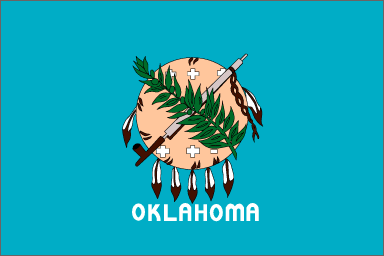

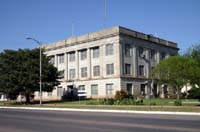
.jpg)

.jpg)

.jpg)



.jpg)
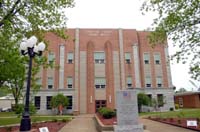

.jpg)
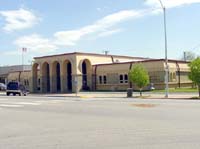
.jpg)
.jpg)
.jpg)
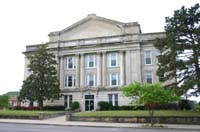
.jpg)
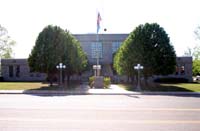
.jpg)
.jpg)

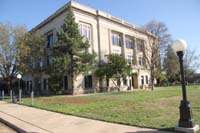
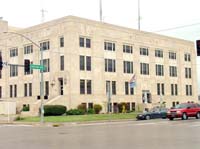
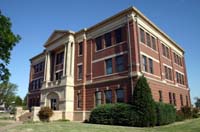
.jpg)
.jpg)
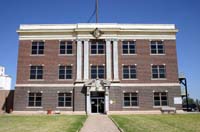

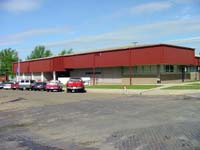
.jpg)
.jpg)
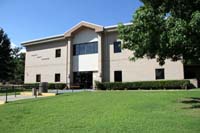
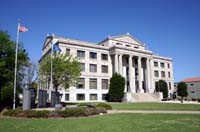
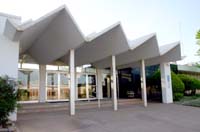
.jpg)
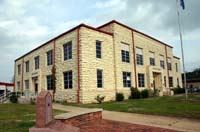

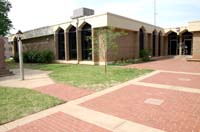


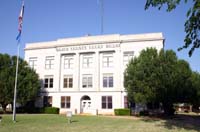
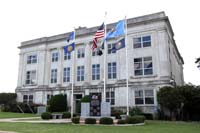
.jpg)

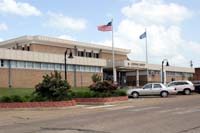
.jpg)
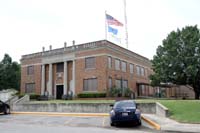
.jpg)
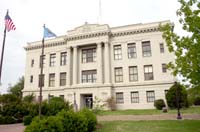
.jpg)
.jpg)

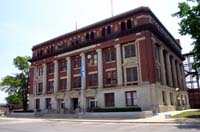
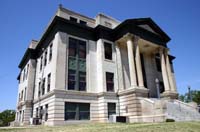
.jpg)
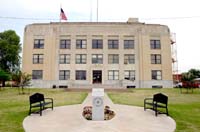
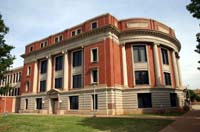
.jpg)
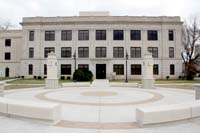
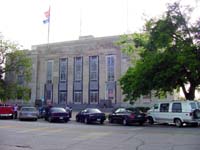

.jpg)
.jpg)


.jpg)
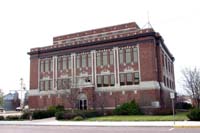
.jpg)
.jpg)
.jpg)
.jpg)
.jpg)

